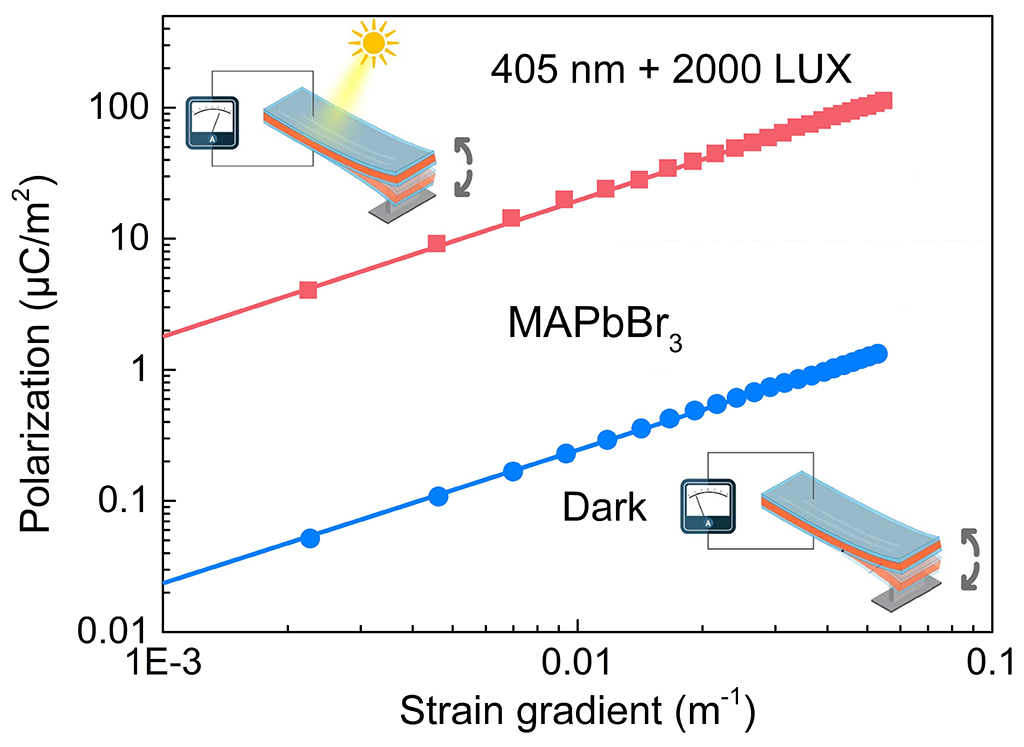Gustau Catalán & Massimiliano Stengel – Institut Català de Nanociència i Nanotecnologia (ICN2)
Capturing energy from the environment (aka energy harvesting) is a very active area of research on account of its usefulness for powering sensors, devices in inaccessible locations, or just generally reducing our dependence on non-renewable energy sources. Two of the most common energyharvesting mechanisms are photovoltaics, which convert sunlight into electricity, and electromechanics, which convert mechanical vibrations into electricity. These two phenomena are based on, respectively, semiconducting junctions and piezoelectric insulators. Unfortunately, the different material families on which these phenomena are based complicate their integration into single devices.
This situation, however, has just changed with the discovery of a new effect, photoflexoelectricity, whereby photovoltaic semiconductor materials not only generate electricity when they vibrate, but the amount of electricity generated by the vibration multiplies by orders of magnitude under illumination. In a collaboration between several groups in China, the US and Catalonia, we have shown that halide perovskites, a family of highly efficient photovoltaic materials, display a photoflexoelectric effect whereby their bending-induced electricity is enhanced by light. We also show that photoflexoelectricity is not exclusive to halides but a general property of semiconductors. Photoflexoelectricity thus enables simultaneous electromechanical and photovoltaic energy harvesting in already commonly used photovoltaic materials and has the potential to revolutionize the field of energy harvesting.
